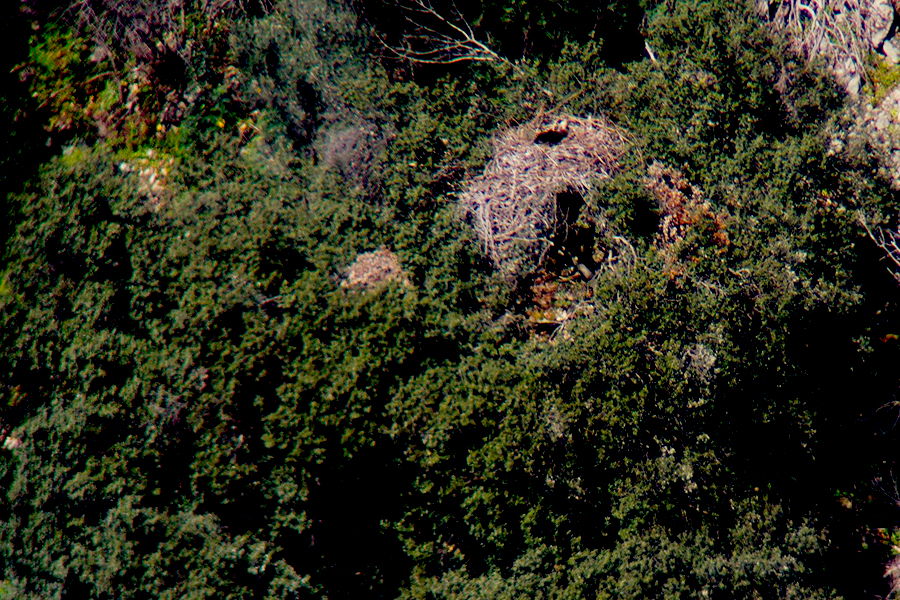
International collaboration and coordination takes place again in the world of vulture conservation for a common purpose — the reintroduction of the Cinereous Vulture in France where it went extinct. The Vulture Conservation Foundation (VCF) secured and organized the transport of five more Cinereous Vultures from Spain to France, which were donated by the Junta de Andalucía. This is the last transportation of Spanish Cinereous Vultures to France since the population is now considered self-sustaining!
Getting ready for the transport of five Cinereous Vultures
Environmental agents from Cordoba, Malaga and Huelva discovered the five young Cinereous Vultures in the wild, suffering from various diseases or malnutrition. Thanks to the care and attention received in the Andalusian Network of Centros de Recuperación de Especies Amenazadas (CREA), the birds made a full recovery and are ready to return to nature. The Consejería de Agricultura, Ganadería, Pesca y Desarrollo Sostenible, thanks to the help of CREA, has generously donated five Cinereous Vultures to the VCF for the reintroduction project in France.
According to the latest census published by SEO BirdLife, the current population of Cinereous Vultures in Spain could be around 3,000 breeding pairs, which is more than 90% of the European population. Andalusia alone has 412 pairs, 16% of the Spanish population. Therefore, Spain is the only country in Europe that has healthy populations to provide birds to support reintroduction programmes for this species in Europe.
Due to the COVID-19 pandemic, unfortunately, these birds had to spend three more months in captivity. The VCF was doing everything possible to transport the birds to France, but it was not possible until now.
Transportation of the Cinereous Vultures
The VCF arranged all the necessary documentation and organized the transfer with a professional animal transportation company specialized in meeting the needs of animals.
On 24 June, the five Cinereous Vultures were ready to leave Andalusia and start their journey to France. The Director of General of Medio Natural, Biodiversidad y Espacios Protegidos, Ángel Andrés Sánchez Garcia, was present during the ceremony to wish farewell to the birds, among the delegation from the Regional Government of Andalusia (Junta de Andalucía). Our Programme Manager, Jovan Andevski, was also present, thanking our partners and discussing the importance of reintroducing the species to France. These five Cinereous Vultures will be released in Verdon as part of the reintroduction project.
Cinereous Vulture reintroduction in France
Cinereous Vultures went extinct in France in the middle of the 20th century. In 1980, the first vulture reintroduction project began for the Griffon Vulture, and after great success, in 1988 the reintroduction of the Cinereous Vulture followed in the Grand Causses area, where 53 individuals were released between 1992 and 2004. In 1996, a pair bred for the first time in the Jonte Valley. This was the first breeding in France in 90 years. Two other reintroduction projects began simultaneously in the pre-Alps (Baronnies and Verdon), where 49 birds were released in Baronnies (site managed by “Vautours en Baronnies”) and 41 specimens have been released in Verdon (site managed by LPO). The VCF collaborated with these projects, led by LPO and“Vautours en Baronnies”, from the very beginning.
All these projects have become a reality thanks to the great support of Spain, particularly Junta de Andalucía and Junta de Extremadura, the recovery centres CREA, AMUS and Los Hornos, and also thanks to the contribution with chicks born in captivity by the Cinereous Vulture European Endangered Species Programme.
Cinereous Vulture population in France

In 2019, the French Cinereous Vulture population had 41 breeding pairs that produced 23 chicks. In 2020, 48 breeding pairs were recorded (28 in Grands Causses, 15 in Baronnies, 5 in Verdon). The 5 Cinereous Vultures now travelling to France will be the last to be released in this country, as the French population of the species are now self-sufficient.
Sign up to our monthly newsletter and stay updated with Europe’s vultures!







